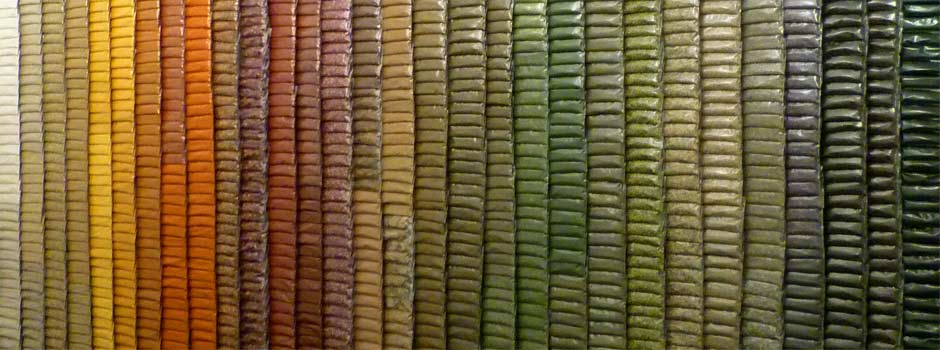
ARTIST The Nature of Art by Conceptual Artist Naz Shahrokh
Jul 12, 2012 FEATURE, Artist
I first came into contact with the conceptual art of Naz Shahrokh at a group exhibition at Ghaf Gallery in Abu Dhabi. The vibrant colour, careful structure and contemplative quality of her work appeals to the senses. On a long, white gallery wall hung three rows of white boxes each containing a silver maple leaf on which was painted a desert landscape in miniature. I was impressed by the precision of the paintings and the harmony created by the intense colour of the simple leaf shape in its pure white box. The jewel-like painting on each leaf, recalled Persian miniature painting. Naz admitted that this was a subconscious influence. She always insists that the emphasis should lie on the use of natural recycled materials. She finds new uses for used or lost objects and recycles materials to form the basis of her installations.
“The introduction and painting on a leaf was inspired by Ana Mendieta, a Cuban artist that I respect tremendously,†said Naz. “Leaves are just perfect size canvases for me and I enjoy this direct relationship with nature.†In fact, one of Naz’s leaves has been awarded ‘First Prize’ at the Viridian International Juried Exhibition in June 2011, by curator Elizabeth Sussman of the Whitney Museum of American Art in New York City.
 Naz Shahrokh / Leaf Horizon, 2010, Watercolor and Acrylic on Silver Maple Leaf / Courtesy of Naz Shahrokh
Naz Shahrokh / Leaf Horizon, 2010, Watercolor and Acrylic on Silver Maple Leaf / Courtesy of Naz Shahrokh
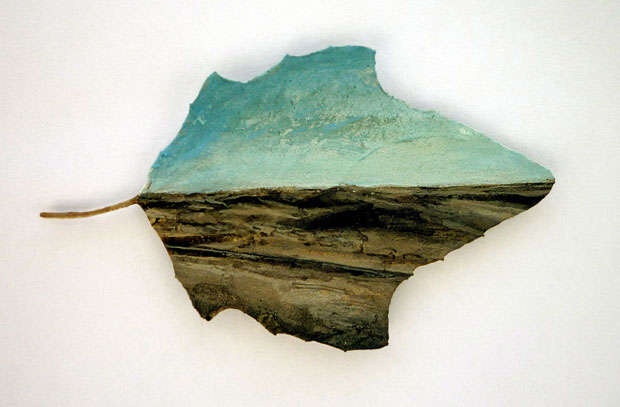 Naz Shahrokh / Leaf Horizon, 2010, Watercolor and Acrylic on Silver Maple Leaf / Courtesy of Naz Shahrokh
Naz Shahrokh / Leaf Horizon, 2010, Watercolor and Acrylic on Silver Maple Leaf / Courtesy of Naz Shahrokh
 Naz Shahrokh / Leaf Horizon (Study of the Emirates) 2010, Watercolor & acrylic on Silver Maple leaf. 3.2x2.5cm. / © Ayyub Hamilton / Courtesy of Naz Shahrokh
Naz Shahrokh / Leaf Horizon (Study of the Emirates) 2010, Watercolor & acrylic on Silver Maple leaf. 3.2x2.5cm. / © Ayyub Hamilton / Courtesy of Naz Shahrokh
Ana Mendieta’s paintings and installations made use of elements such as blood, leaves and earth, which she boldly arranged around her own body to intense effect. Naz often works with natural elements such as stems, salt and spices but also enjoys exploring the relationship between the different elements. “I enjoy creating order out of chaos, which is a sort of meditation for me,†said Naz. “The materials I use hold a collective memory, either my own personal narrative or in conjunction to the origin of the materials.â€
Naz is averse to her work being put into categories, since it is highly personal. She herself was born in Iran, brought up in Paris and Los Angeles and speaks English, French and Farsi. She studied and taught Art at the Pratt Institute in Brooklyn, New York City. Naz also studied native American Navajo Sand Paintings and she counted among her influences chakra colour theory, art/earthworks, Environmental Art and Architecture, Public Art and Metaphysics. Later, Naz taught Fine Art at the American University in Cairo and now teaches at Zayed University in Abu Dhabi, the United Arab Emirates.
Further work in the Ghaf Gallery exhibition explored Naz’s Persian heritage and the ‘Haft-Sin’ - seven symbolic table settings used in the traditional Iranian Spring Celebrations. Her ‘Haft Sin Zazen’ (2010) - a linen cloth stretched on the floor as a horizontal canvas held uniform piles of salt purposefully lined up to create a pattern. The precise manipulation of the natural white salt on the perfectly stretched white linen, created a space that was both calm and surreal.
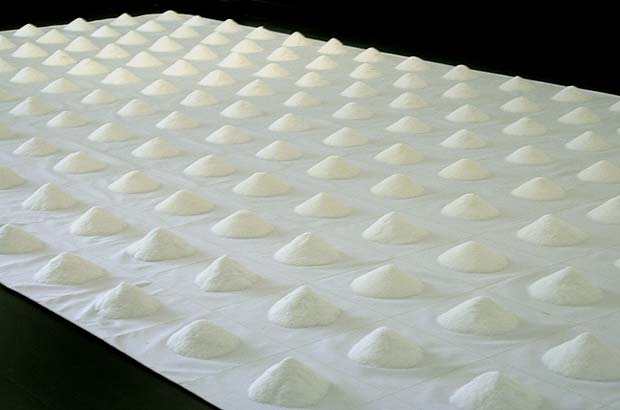 Naz Shahrokh / Haft-Sin Zazen, 2010, Gold and Silver Thread and Salt on Linen, © Ayyub Hamilton / Courtesy of Naz Shahrokh
Naz Shahrokh / Haft-Sin Zazen, 2010, Gold and Silver Thread and Salt on Linen, © Ayyub Hamilton / Courtesy of Naz Shahrokh
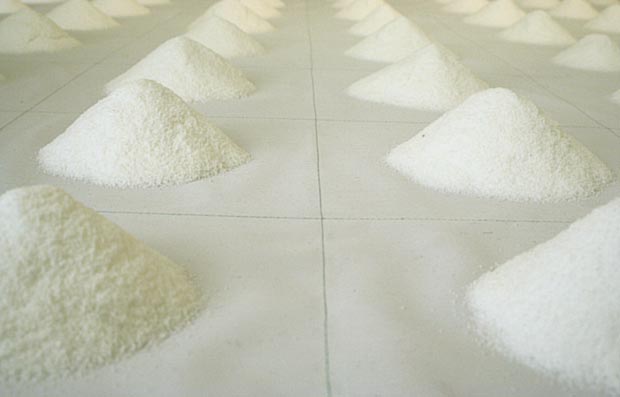 Naz Shahrokh / Haft-Sin Zazen, Detail, 2010, Gold and Silver Thread and Salt on Linen, © Ayyub Hamilton / Courtesy of Naz Shahrokh
Naz Shahrokh / Haft-Sin Zazen, Detail, 2010, Gold and Silver Thread and Salt on Linen, © Ayyub Hamilton / Courtesy of Naz Shahrokh
An earlier installation, entitled ‘Stairway’ (2005) situated in Dashur in Egypt, involved a long trail of thin stems of exactly the same length, grouped precisely according to colour and held together by transparent fishing thread. This carpet of sticks stretched out over the sand towards an ancient pyramid. ‘Stairway’ involved the same precision, organization and ‘recycling’ of nature as the ‘Haft Sin Zazen’.
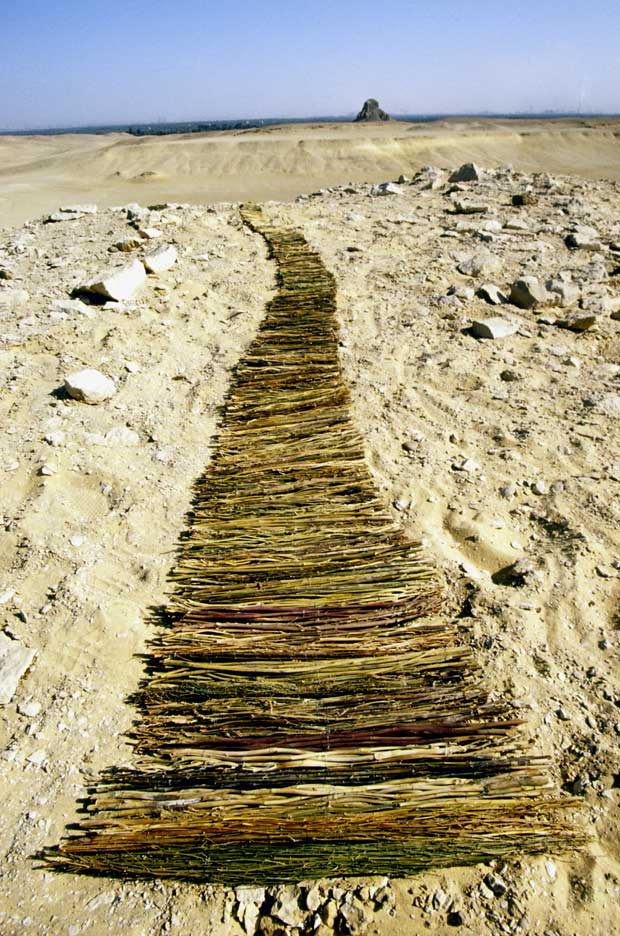 Naz Shahrokh / Stairway, 2005, Collected Stems and Fishing Line, © Graham Waite / Courtesy of Naz Shahrokh
Naz Shahrokh / Stairway, 2005, Collected Stems and Fishing Line, © Graham Waite / Courtesy of Naz Shahrokh
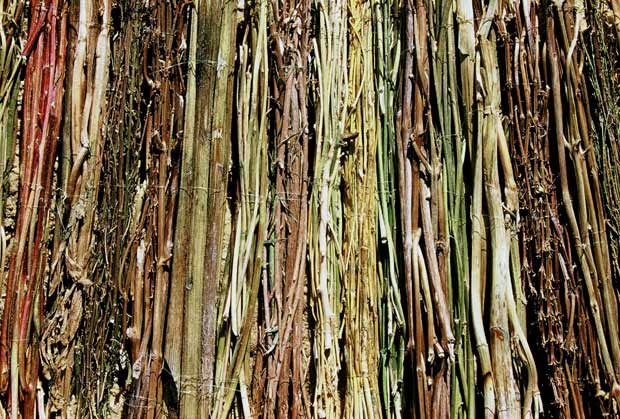 Naz Shahrokh / Stairway, Detail, 2005, Collected Stems and Fishing Line, © Graham Waite / Courtesy of Naz Shahrokh
Naz Shahrokh / Stairway, Detail, 2005, Collected Stems and Fishing Line, © Graham Waite / Courtesy of Naz Shahrokh
The exhibition also included ‘Spice Wall’ (2010). This enormous installation of exotic and strong smelling spices made up a huge expanse of colourful spices and herbs arranged precisely in rows of matching colours. They were collected over many years, throughout the Gulf region, the Middle East, and North Africa.
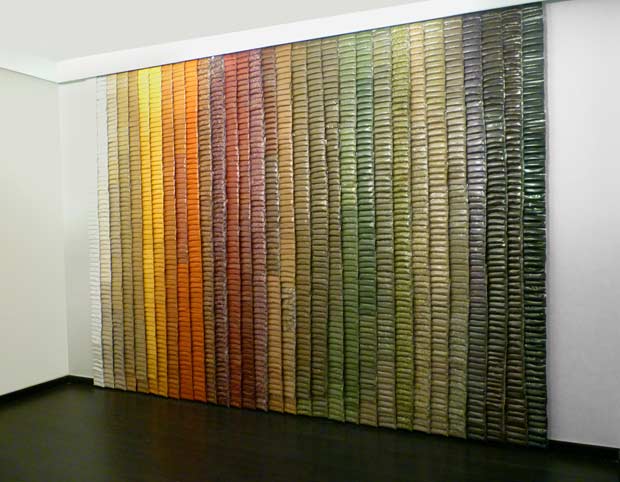 Naz Shahrokh / Spice Wall, 2010, Collected Spices and Herbs in Plastic Bags on Wall / Courtesy of Naz Shahrokh
Naz Shahrokh / Spice Wall, 2010, Collected Spices and Herbs in Plastic Bags on Wall / Courtesy of Naz Shahrokh
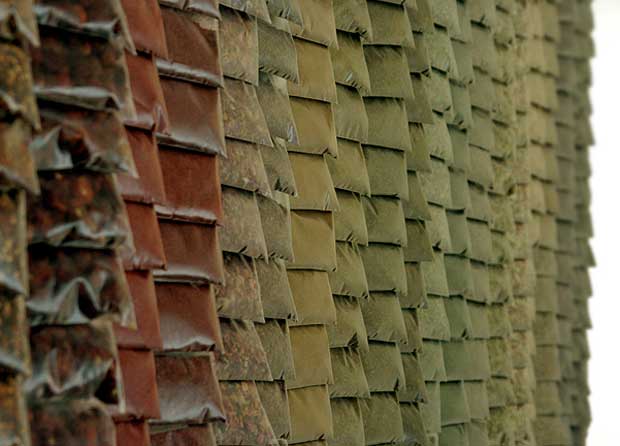 Naz Shahrokh / Spice Wall, Detail, 2010, Collected Spices and Herbs in Plastic Bags on Wall / Courtesy of Naz Shahrokh
Naz Shahrokh / Spice Wall, Detail, 2010, Collected Spices and Herbs in Plastic Bags on Wall / Courtesy of Naz Shahrokh
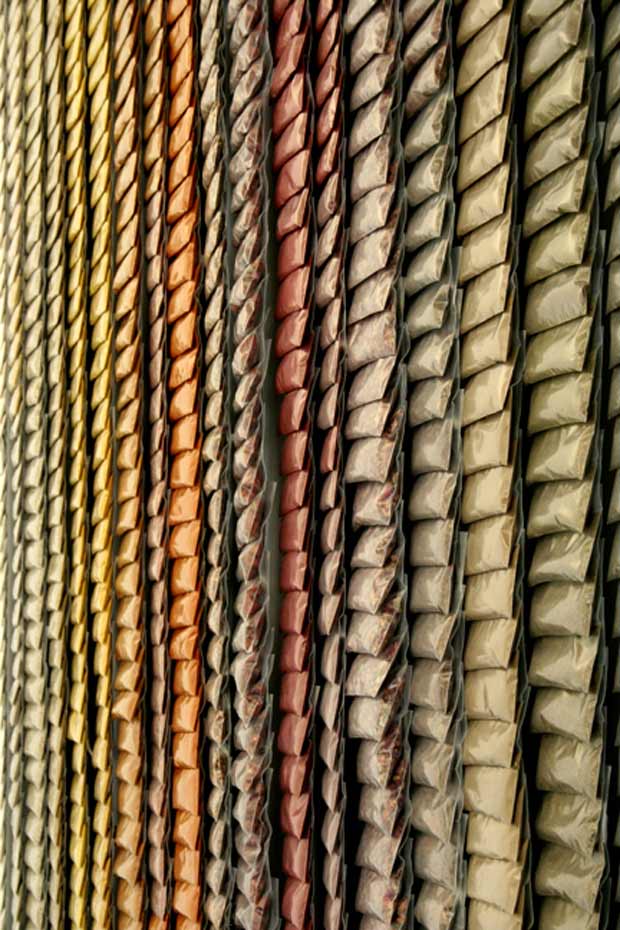 Naz Shahrokh / Spice Wall, Detail, 2010, Collected Spices and Herbs in Plastic Bags on Wall / Courtesy of Naz Shahrokh
Naz Shahrokh / Spice Wall, Detail, 2010, Collected Spices and Herbs in Plastic Bags on Wall / Courtesy of Naz Shahrokh
Naz Shahrokh’s works are found internationally in private collections. Her work has had a great effect on those visiting her exhibitions in galleries and museums from the United States to Europe, Egypt and the UAE. Observers of her art are drawn to the materials that she uses, their organized symmetry and the personal, meditative quality that is created. Naz Shahrokh’s work is both memorable and inspiring.
Comments
Add a comment